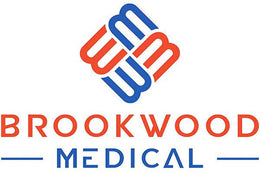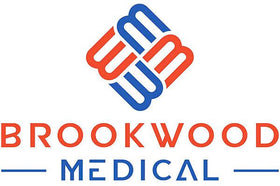3PLY vs KN95 Face Masks: What You Need to Know

Frequently Asked Questions
1. What are 3PLY masks?
2. What are the advantages of 3PLY masks?
3. What are KN95 face masks?
4. When should I choose KN95 masks over 3PLY masks?
5. What are the best practices for using masks?
With the ongoing need for respiratory protection, understanding the different types of masks available is more crucial than ever. Among the most commonly discussed are the 3PLY and KN95 face masks. While both provide a degree of protection, their construction, filtration efficiency, and intended use can vary significantly. This article breaks down these differences, helping you make an informed decision when selecting a mask for personal or professional use.
What are 3PLY Masks?
3PLY masks, also known as surgical masks, are composed of three layers: a non-woven outer layer, a filter layer, and a soft inner layer. Each layer serves a specific function to enhance protection while ensuring comfort.
Composition of 3PLY Masks
- Outer Layer: This layer repels water and liquid droplets and provides an initial barrier against potential contaminants.
- Middle Filter Layer: The core component designed to filter out harmful particles, bacteria, and viruses.
- Inner Layer: Made from soft, hypoallergenic materials that sit comfortably on the skin, absorbing moisture from breath.
Pros and Cons of 3PLY Masks
When considering 3PLY masks, it’s essential to weigh their advantages and limitations:
-
Pros:
- Lightweight and comfortable for extended wear.
- Disposable, ensuring a fresh mask with every use.
- Widely available and less expensive compared to other types.
-
Cons:
- Lower filtration efficiency compared to KN95 and N95 masks.
- Can become less effective when moist.
- Not suitable for high-risk environments where airborne pathogens are present.
Understanding KN95 Face Masks
KN95 face masks are a type of respirator that fits snugly against the face, designed to filter out at least 95% of airborne particles, including large respiratory droplets. They belong to a broader classification of masks known as respirators, which offer a higher level of protection.
Key Features of KN95 Face Masks
- Filtration Efficiency: KN95 masks are designed to achieve a filtration efficiency of at least 95%, providing a significant barrier against airborne particles.
- Design: They are typically molded and secure against the nose and mouth, reducing the risk of unfiltered air entering or exiting.
- Multi-layer Construction: Most KN95 masks feature multiple layers that enhance their filtration capabilities and improve comfort.
Pros and Cons of KN95 Masks
When evaluating whether to use KN95 masks, consider their strengths and weaknesses:
-
Pros:
- High filtration efficiency to protect against airborne particles.
- Form-fitting design helps to prevent leakage around the edges.
- Suitable for many healthcare settings and environments with high exposure risks.
-
Cons:
- Can be more expensive than 3PLY masks.
- Generally less comfortable for prolonged use due to the tighter fit.
- Some models may require proper fit testing to ensure effectiveness.
Comparing 3PLY Masks and KN95 Masks
Both 3PLY and KN95 masks serve critical roles in health and safety, but their functionalities differ. Understanding these differences can guide you in selecting the right mask for your needs.
Filtration Efficacy
Filtration efficacy is one of the most critical aspects when comparing the two types of masks. 3PLY masks primarily protect others by filtering outgoing breaths. In contrast, KN95 masks offer a higher level of filtration, protecting the wearer from inhaling harmful particles. This attribute makes KN95 face masks the preferred choice in high-risk settings, such as hospitals and clinics.
Fit and Comfort
Fit is another crucial factor; 3PLY masks typically have ear loops and a loose fit, allowing for easy donning and doffing. However, this may leave gaps that reduce efficacy. On the other hand, KN95 masks are designed for a snug fit, which improves their protective capabilities but may feel less comfortable for extended wears.
Intended Use
Knowing when to use each type of mask is essential. 3PLY masks are ideal for everyday use, such as in public places or for short periods. They are often used in non-medical settings, while KN95 masks are suitable for environments where high levels of viral or bacterial exposure are possible.
Regulatory Standards and Certification
Both mask types must meet specific regulatory standards to ensure their effectiveness. The certification processes differ based on the region. In the United States, the National Institute for Occupational Safety and Health (NIOSH) certifies KN95 masks, ensuring they meet stringent filtration and performance standards. On the other hand, 3PLY masks may follow ASTM (American Society for Testing and Materials) standards for medical masks without always requiring NIOSH certification.
When to Use 3PLY Masks vs. KN95 Masks
Your choice between these two types of masks should depend on various factors such as your environment, duration of use, and specific health risks. Here are a few scenarios to consider:
When to Choose 3PLY Masks
- Everyday activities in public spaces
- Short-duration exposure where high-risk exposure is not likely
- As a backup during less critical situations when supplies are low
When to Choose KN95 Masks
- In healthcare settings or when caring for sick individuals
- During extended exposure to crowded environments
- When exposed to confirmed COVID-19 cases or high-risk situations
Best Practices for Mask Use
Regardless of the mask type you choose, following best practices can ensure you get the most out of your protective gear:
- Proper Fit: Make sure your mask covers both your nose and mouth snugly without gaps.
- Avoid Touching the Mask: Refrain from touching the mask while wearing it, as this can transfer contaminants.
- Dispose Responsibly: Dispose of single-use masks correctly, following local guidelines to prevent environmental damage and spread of infection.
What's Next? Make the Right Choice!
The choices between 3PLY and KN95 masks can feel overwhelming, but understanding their distinctive features will empower you to make the right decision for your personal health and safety. Assess your environment, consider your exposure risks, and choose accordingly. As mask-wearing continues to play a vital role in public health, being informed can help you protect yourself and others effectively.
With adequate knowledge of each mask's construction, efficiency, and intended use, you can navigate the choices available to you. Always stay informed about updates in health guidelines and technologies surrounding face masks to adapt your protective strategies as needed.






